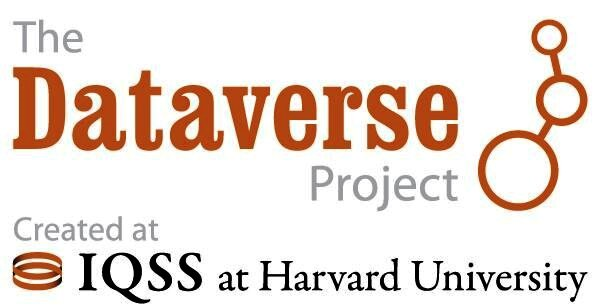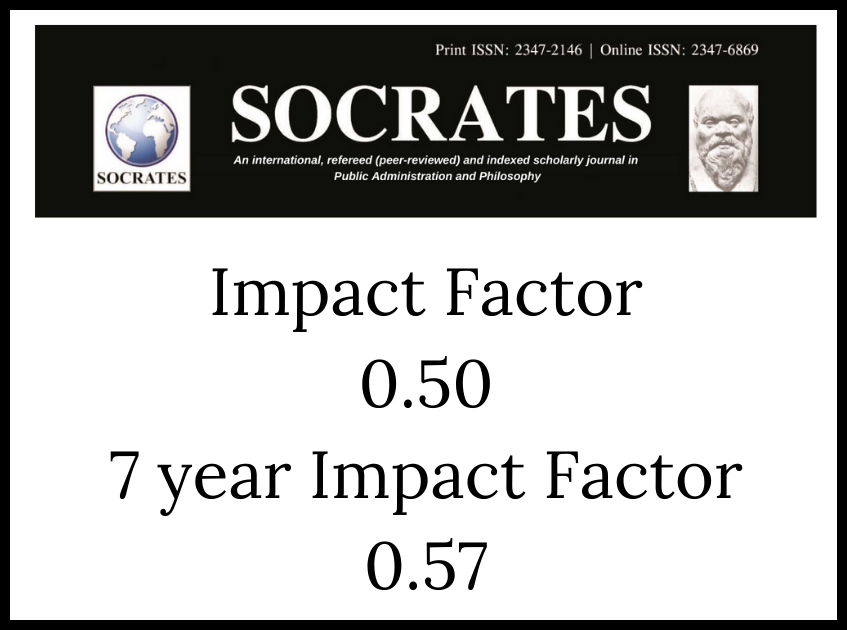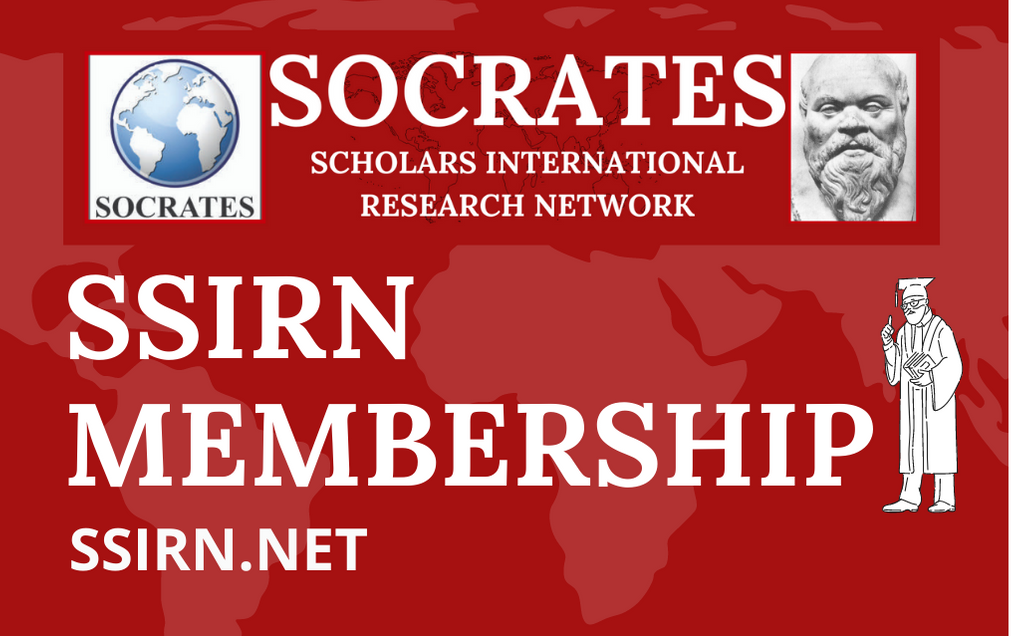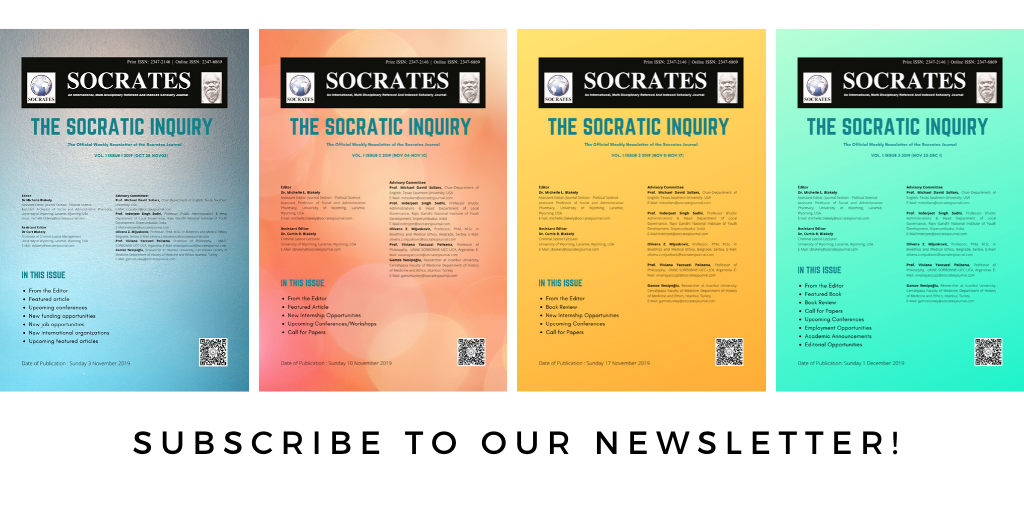Higher Education in India
Measures for Consolidating the Quality of Teaching
DOI:
https://doi.org/10.5958/2347-6869.2020.00001.1Keywords:
Higher Education, Quality of Teaching, University, College, Teacher-student interfaceAbstract
This paper examines select micro-level considerations as it portrays the strategies for academic excellence in the country’s higher education sector.
What light does the etymology of the two words – ‘university’ and ‘college’ – throw on the soul of the respective jurisdictions?
A “university” is by definition an entity of universalistic values: the term (university) traces its origin to the word “universe”. Recourse to the internet in tracing the etymology of the word is an exciting exercise. One rudimentary hint one draws from this search is that a university is a community of masters and scholars who are devoted to the search for truth.
Likewise, the word “college” which is, etymologically, a derivative of “collegial”: in using the word “collegial” reference is in essence to that which involves shared responsibility, as among a group of colleagues. A college is thus an institution committed to the values of collegiality. The emphasis is that teachers and students, of the entity called college, relate with each other as peers, not superior and subordinate. This stresses ‘horizontality’, ‘exchange’ and ‘give and take’ between the two players: namely, the teacher and the student. This elevates teaching into a demand-driven process where the teacher tailors the inputs to suit the needs of the student. In other words, does not allow teaching to degenerate into a ritual. This pictures the teacher as a missionary in the domain of knowledge-creation and knowledge-dissemination.
In that background, the paper focuses first on the matters that determine the quality of the teacher-student interface. Three issues warrant a specific mention as one looks for the means to underline what it takes to elevate the level. These are as under:
- Topic-wise Reading-list,
- Lecture-end Feedback, and
- Tutorials, Home-Assignments and the availability of the course-instructor for consultation beyond the class-hours
The paper focuses next on the dire need to launch a country-wide campaign to translate the classics of the respective disciplines in the Hindi and Regional Languages.
DOI: 10.5958/2347-6869.2020.00001.1
Downloads
Metrics
References
This opinion paper does not contain any references.
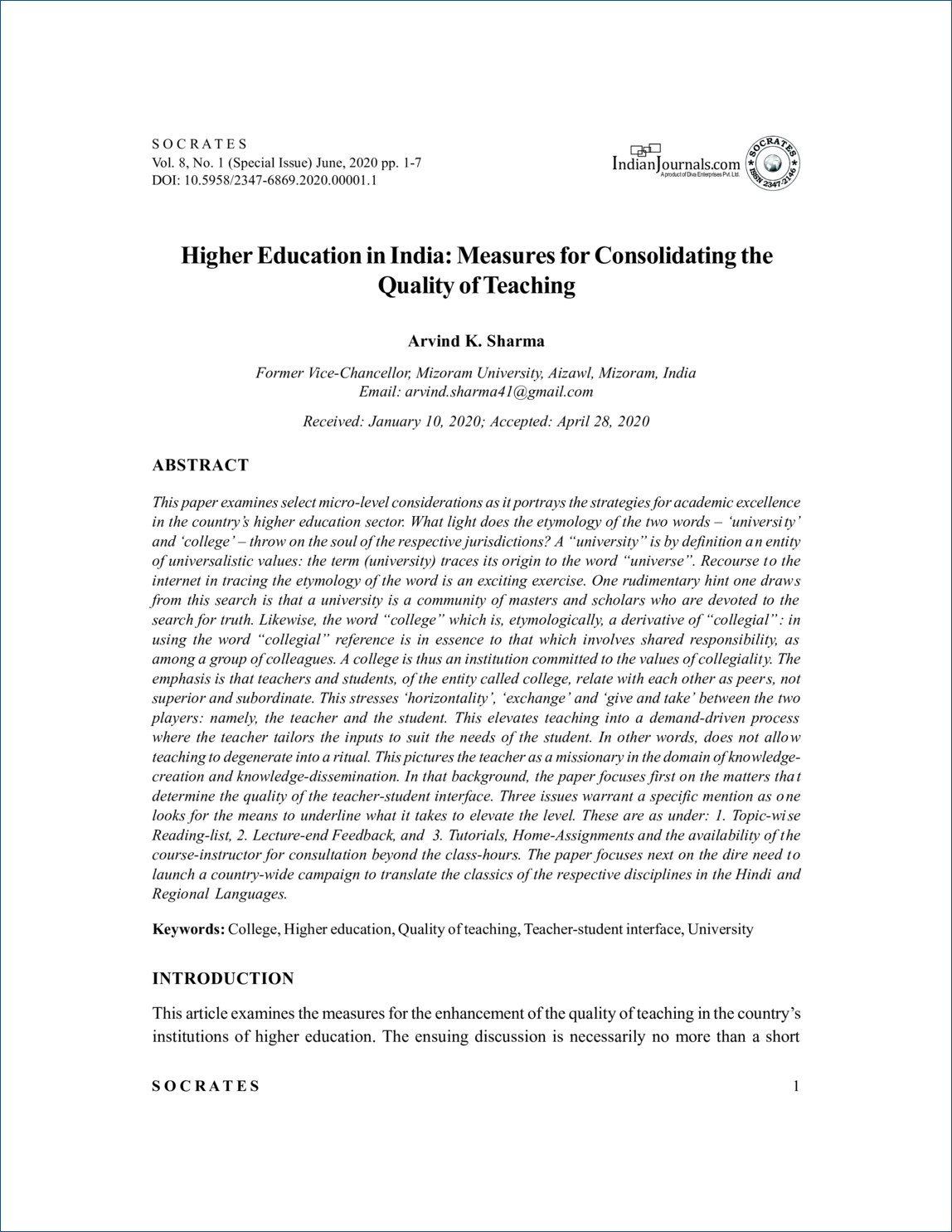
Downloads
Published
How to Cite
Issue
Section
Categories
License
Copyright (c) 2020 Arvind K Sharma

This work is licensed under a Creative Commons Attribution-NonCommercial 4.0 International License.
Revised Copyright/CC license that applies to all the articles published after 05-02-2017
Attribution-NonCommercial 4.0 International (CC BY-NC 4.0)

Copyright/CC license that applies to all the articles published before 05-02-2017
Attribution-Non Commercial-No Derivatives 4.0 International (CC BY-NC-ND 4.0)

Author(s) will retain all the right except commercial and re-publishing rights. In the case of re-publishing, they will have to obtain written permission from the journal. Additional licensing agreements (Creative Commons licenses) grants rights to readers to copy, distribute, display and perform the work as long as you give the original author(s) credit, they can not use the works for commercial purposes and are not allowed to alter, transform, or build upon the work. For any reuse or distribution, readers and users must make clear to others the license terms of this work. Any of these conditions can be waived if you get permission from the copyright holders. Nothing in this license impairs or restricts the authors’ rights. To view a copy of this license, visit http://creativecommons.org/licenses/by-nc-nd/4.0/ or send a letter to Creative Commons, 171 Second Street, Suite 300, San Francisco, California, 94105, USA.
Research Papers published in SOCRATES are licensed under an Attribution-NonCommercial-NoDerivatives 4.0 International (CC BY-NC-ND 4.0)





